บางครั้งในชีวิตของเรา มีการเรียกร้องให้เรามีความเข้าใจกันดีกับสิ่งแวดล้อมอายุโลก ไม่ว่าจะเป็นสัตว์ป่า ทะเล หรือทรงพลังธรรมชาติอื่น ๆ ในภาษาอังกฤษ เราจะพยายามนำเสนอบทสนทนาและเนื้อหาเรียนรู้ที่มีความเมตตาและสนุกสำหรับเด็กๆ ที่ต้องการเรียนรู้เกี่ยวกับโลกอายุโลกของเรา โดยผสมผสานกับภาษาอังกฤษเพื่อช่วยเติบโตความรู้และความสนใจของพวกเขาเรียบร้อยและมีประโยชน์มากที่สุด
หน้าที่ของเด็ก
เด็กจะต้องจับคู่คำศัพท์ภาษาอังกฤษกับภาพของอาหารที่พวกเขาชอบในแต่ละหน้าของเกม。
หน้าที่ของครู:1. เตรียมเอกสารเกม:– หน้าแรก: ภาพของอาหารที่เด็กชอบ (ตัวอย่าง: ซอสเม็ด, แป้ง, นม)- หน้าที่สอง: ภาพของอาหารที่เด็กชอบ (ตัวอย่าง: แกงสด, ขนม, ของปั้น)- หน้าที่สาม: ภาพของอาหารที่เด็กชอบ (ตัวอย่าง: แกงทราย, ขนมนมสด, นมชา)
- แจกจ่ายเอกสารเกมให้เด็ก:
- ให้เด็กแต่ละคนหนึ่งเอกสารเกมที่เตรียมไว้
- นำเสนอเกม:
- ครูอ่านคำศัพท์ภาษาอังกฤษและให้เด็กค้นหาภาพที่ตรงกันข้างมาก
- ช่วยเหลือและติดตาม:
- ช่วยเหลือเด็กที่ต้องการและติดตามการจับคู่ของเด็กเหล่านั้น
- ประเมินผล:
- ประเมินผลการจับคู่ของเด็กและให้การเสนอนำให้เด็กที่ต้องการ
กระบวนการเกม:
- ครูนำเสนอ:
- ครูอ่านคำศัพท์แรก (ตัวอย่าง: “Tommy has a sandwich.”)
- ให้เด็กค้นหาภาพของแซนดวิช (ซอสเม็ด)ในภาพของอาหาร
- เด็กจับคู่:
- เด็กจับคู่คำศัพท์กับภาพที่ตรงกันข้างมาก
- ครูช่วยเหลือหากเด็กต้องการ
- ติดตามผลลัพธ์:
- ทำลายภาพที่เด็กจับคู่แล้วและให้ภาพใหม่ของอาหารอื่น
- วิ่งหรือเล่นเกมเล็กๆ ที่เกี่ยวกับการจับคู่เพื่อเพิ่มความสนุกสนาน
- ประเมินผล:
- ประเมินผลการจับคู่ของเด็กและให้การ
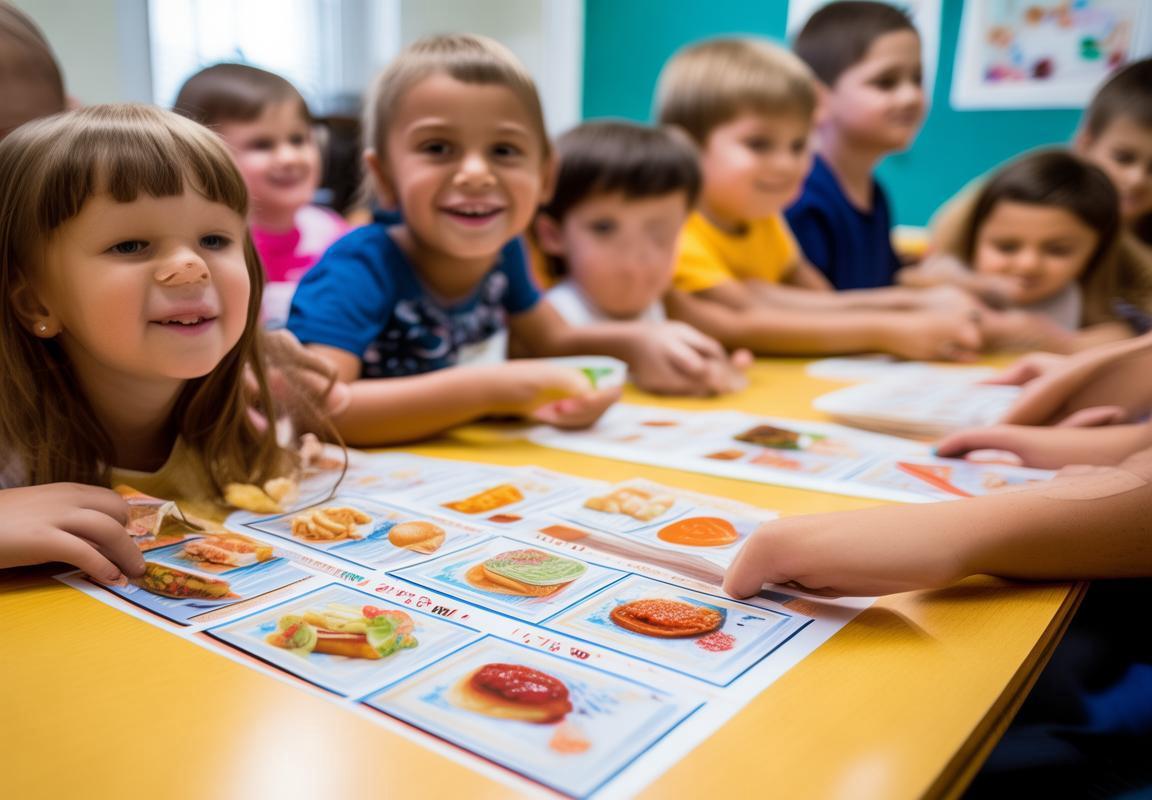
บทเรียน
แบบฝึกหัดการหาคำศัพท์ซ่อนภาษาอังกฤษเกี่ยวกับสิ่งแวดล้อม
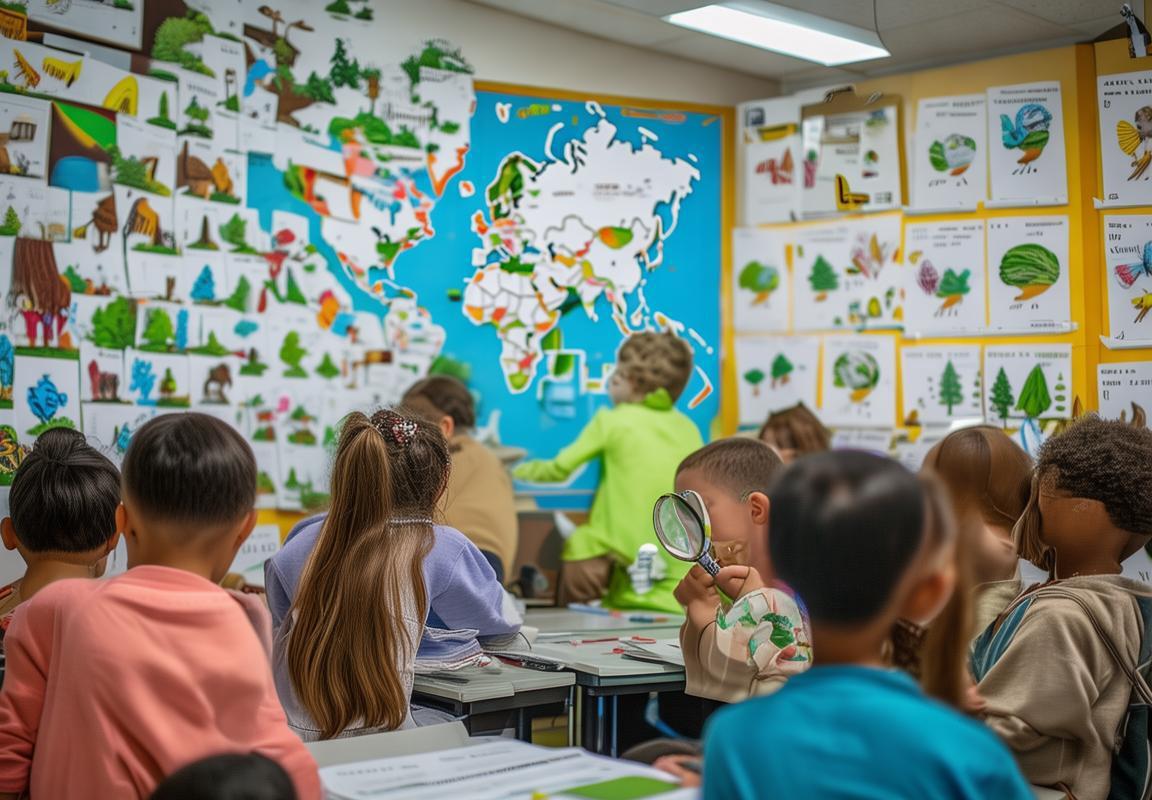
หน้าที่ของเด็ก
เด็กจะต้องหาคำศัพท์ที่ซ่อนอยู่ในบทที่เราจะอ่านขึ้นมาด้วยภาษาอังกฤษ。
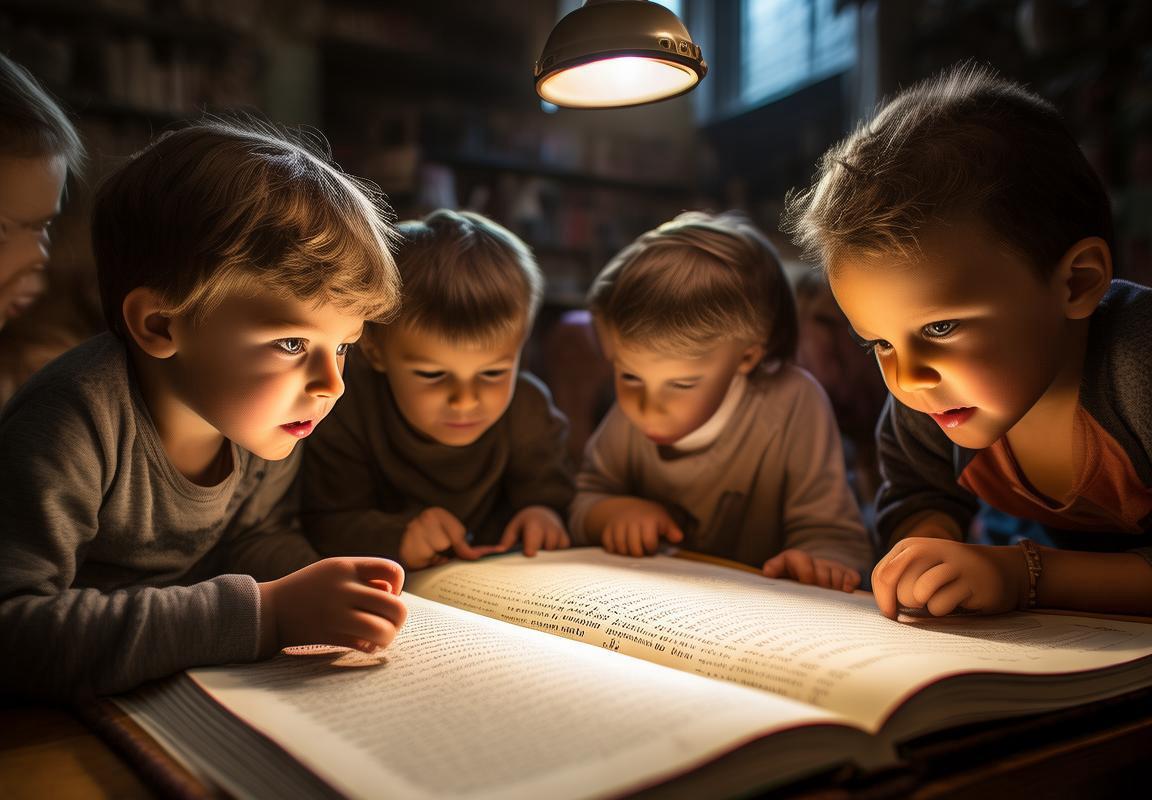
บทเรียน
Title: A Visit to the Zoo
Text:“Jack and Lily visited the zoo with their parents. They saw many animals, such as lions, tigers, and pandas. The elephants were playing near the water. The giraffes were eating leaves. The children were very happy and took many pictures. They also bought some snacks at the zoo shop. At the end of the day, they went home with lots of fun memories.”
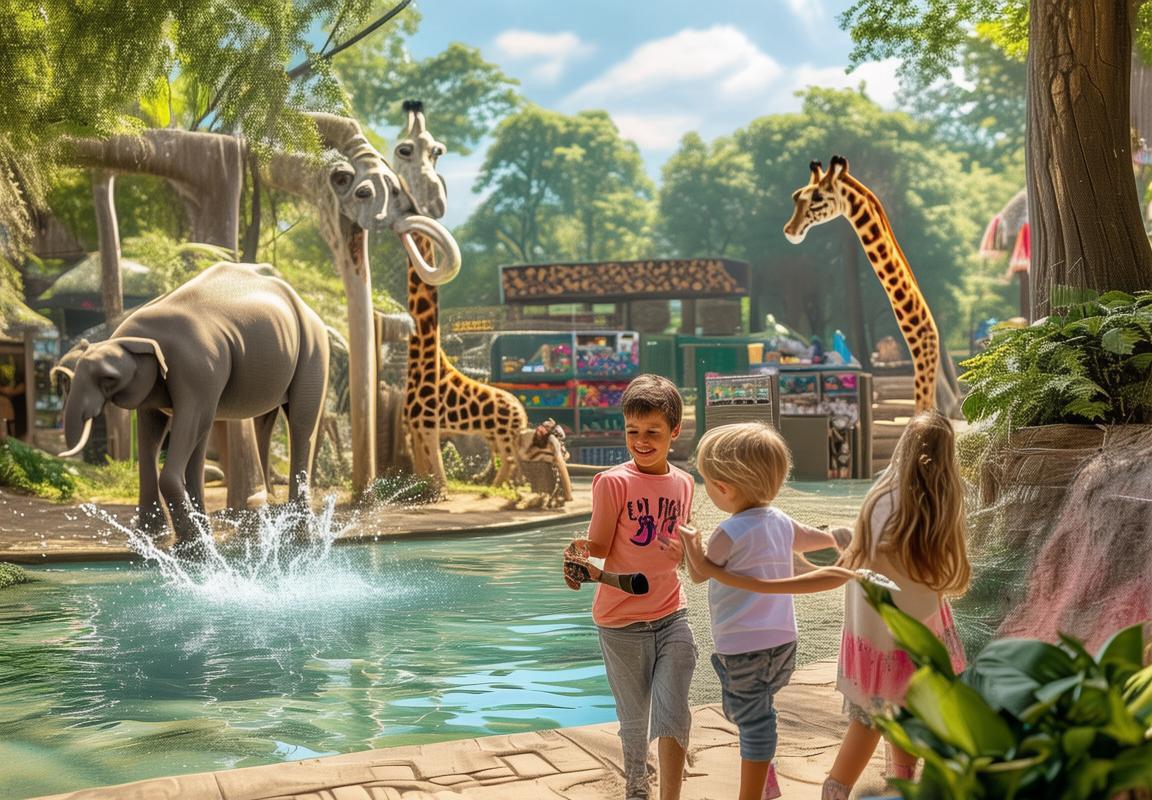
ข้อสำคัญที่เด็กต้องหา
- zoo
- lion
- tiger
- panda
- elephant
- water
- giraffe
- leaves
- snacks
- shop
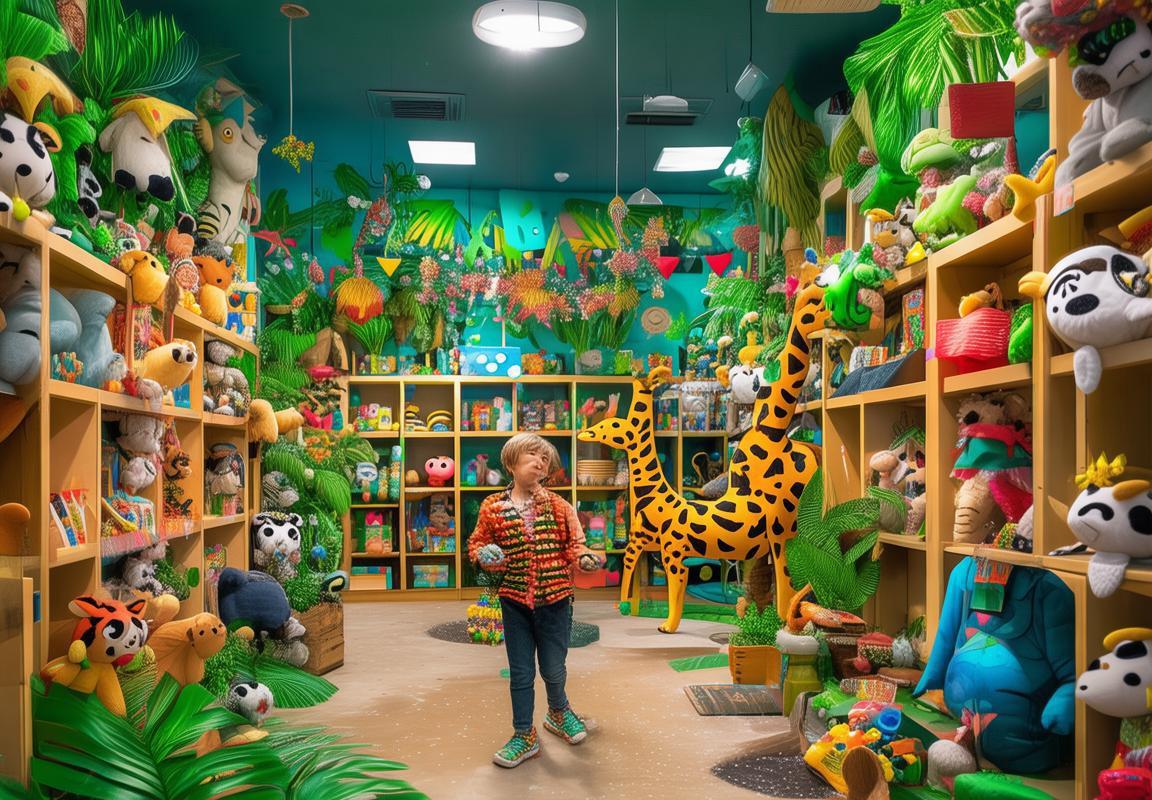
กระบวนการแบบฝึกหัด
- อ่านบทเรียนครั้งแรก: อ่านบทเรียนแบบฝึกหัดให้เด็กฟังและสัมผัสเนื้อหาของบท.
- อ่านบทเรียนอีกครั้ง: อ่านบทเรียนอีกครั้งและขอให้เด็กช่วยติดตามข้อสำคัญที่ระบุข้างต้น.
- หาคำศัพท์: ให้เด็กหาคำศัพท์ที่ซ่อนอยู่ในบท. เด็กสามารถใช้เล่มหรือกระดาษเพื่อเห็นคำศัพท์ที่หาขึ้นมา.
- ติดตามคำศัพท์: ให้เด็กเขียนคำศัพท์ที่หาขึ้นมาบนกระดาษหรือเล่ม.
- อ่านคำศัพท์ที่หาขึ้นมา: ให้เด็กอ่านคำศัพท์ที่หาขึ้นมาและบอกเกี่ยวกับความหมายของคำศัพท์ที่หาขึ้นมา.

ข้อสำคัญ
- เป้าหมาย: ช่วยเด็กเรียนรู้คำศัพท์เกี่ยวกับสิ่งแวดล้อมและเพิ่มความสำคัญต่อการอ่านและการหาคำศัพท์.
- กิจกรรม: ให้เด็กมีโอกาสเล่นและทำงานด้วยตนเองในการหาคำศัพท์ที่ซ่อนอยู่.
- การตอบโต้: ให้เด็กมีโอกาสแสดงความรู้ของตนผ่านการอ่านคำศัพท์และบอกเกี่ยวกับความหมายของคำศัพท์.
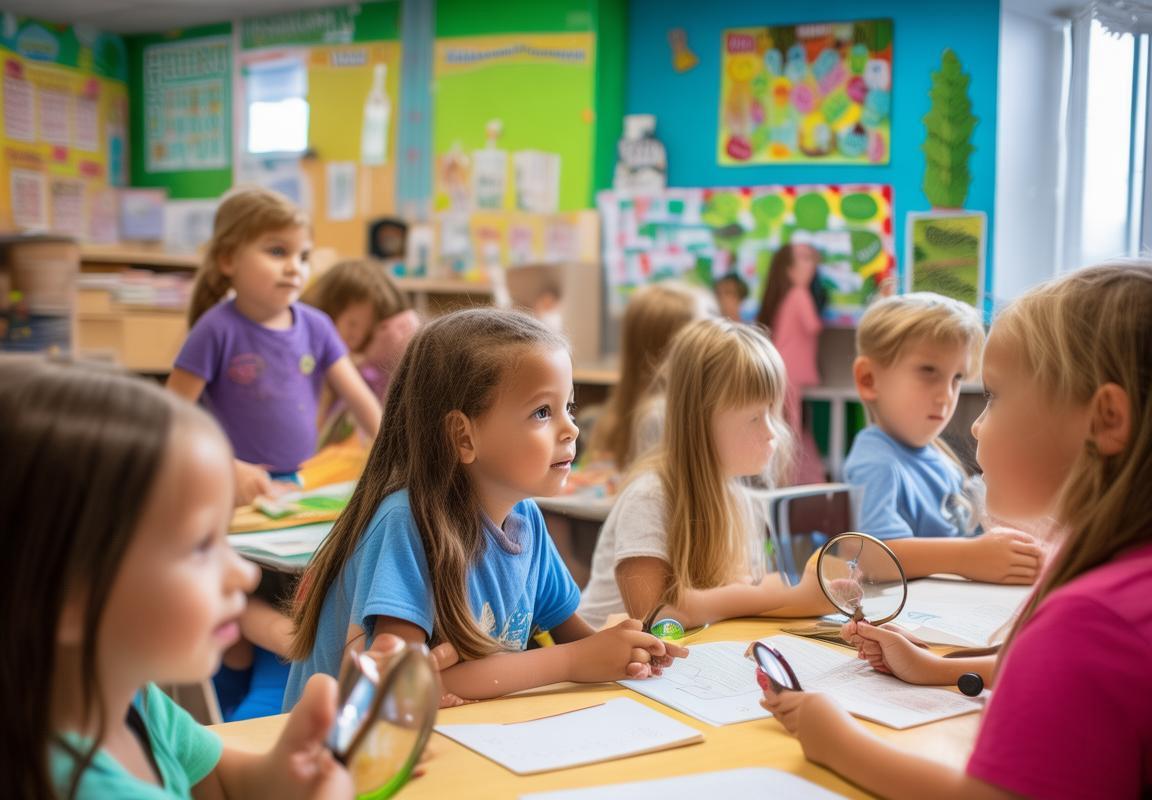
ข้อสำคัญที่เด็กต้องหา
ข้อสำคัญที่เด็กต้องหา คือคำศัพท์ที่ซ่อนอยู่ในบทที่เราจะอ่านขึ้นมาด้วยภาษาอังกฤษ ดังนี้:
- tree
- slide
- playground
- hide and seek
- rain
- shelter
- rainbow
เด็กจะต้องหาคำศัพท์ที่ซ่อนอยู่และเขียนมันลงบนกระดาษหรือเล่ม หลังจากที่อ่านบทเรียนครั้งแรกและทราบข้อมูลที่ซ่อนอยู่ นี่จะช่วยเด็กเรียนรู้คำศัพท์และเพิ่มความสำคัญต่อการอ่านและการหาคำศัพท์ ดังนี้:
- tree: ต้นไม้
- slide: สลาย
- playground: สนามเล่น
- hide and seek: การเล่นหลอก
- rain: ฝน
- shelter: ที่พึกครอง
- rainbow: ลูกฟ้า
ข้อสำคัญเหล่านี้จะช่วยเด็กเรียนรู้คำศัพท์เกี่ยวกับสิ่งแวดล้อมและสร้างความสำคัญต่อการหาคำศัพท์ ดังนี้:
- tree: สิ่งแวดล้อมที่มีต้นไม้
- slide: สิ่งแวดล้อมที่มีสลาย
- playground: สิ่งแวดล้อมที่เด็กเล่น
- hide and seek: กิจกรรมที่เด็กเล่น
- rain: สภาพอากาศที่มีฝน
- shelter: ที่พึกครองเมื่อมีฝน
- rainbow: สิ่งที่เกิดขึ้นเมื่อมีฝน
การหาคำศัพท์นี้จะช่วยเด็กพัฒนาทักษะการอ่านและการเรียนรู้ โดยให้โอกาสในการแสดงความรู้ของตนผ่านการอ่านคำศัพท์และบอกเกี่ยวกับความหมายของคำศัพท์ที่หาขึ้นมา ดังนี้:
- tree: มีต้นไม้
- slide: มีสลาย
- playground: มีสนามเล่น
- hide and seek: การเล่นหลอก
- rain: มีฝน
- shelter: มีที่พึกครอง
- rainbow: มีลูกฟ้า
นี่จะช่วยเด็กเรียนรู้คำศัพท์และเพิ่มความสำคัญต่อการอ่านและการหาคำศัพท์ ดังนี้:
- tree: สิ่งแวดล้อมที่มีต้นไม้
- slide: สิ่ง
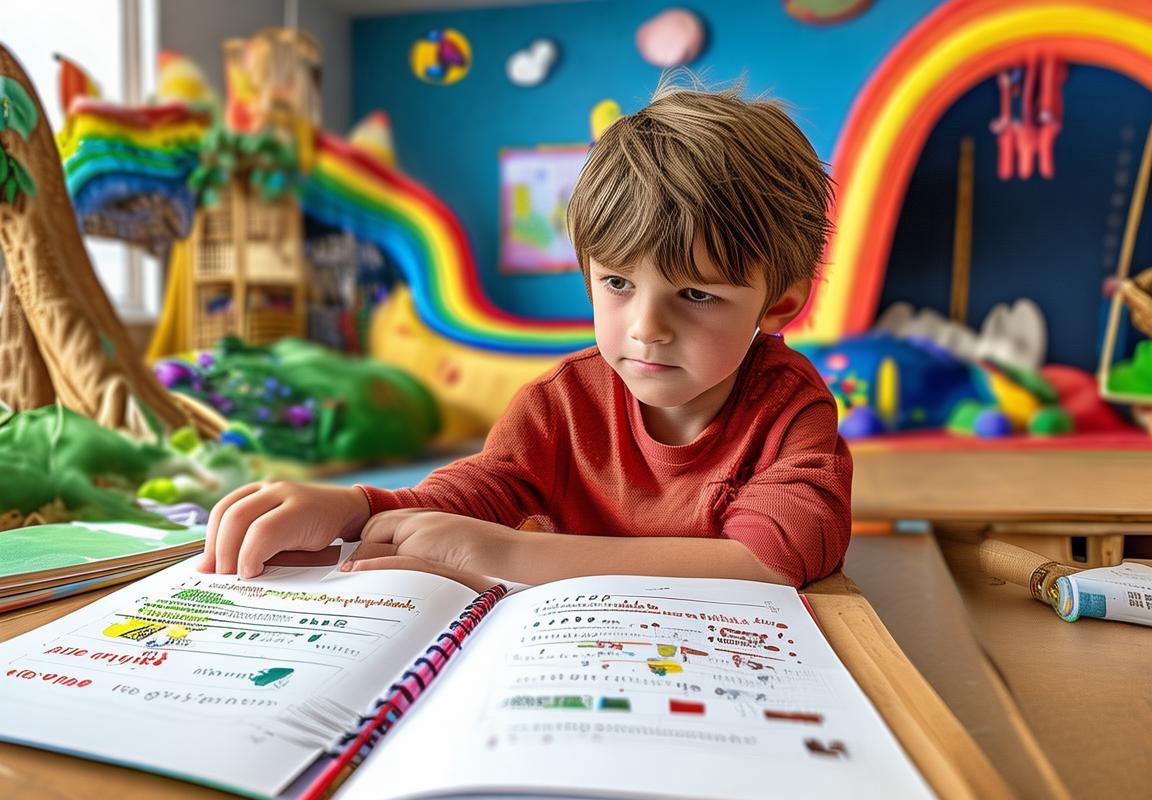
กระบวนการแบบฝึกหัด
Once upon a time, there was a curious little boy named Jack. Jack loved adventures and one sunny morning, he decided to go on a journey to the beach. He put on his favorite hat, grabbed his bucket and spade, and ran out the door.
As Jack walked along the path, he could feel the warm sun on his face and the cool breeze blowing through the trees. He passed by a field of flowers, each one more colorful than the last, and a flock of birds chirping merrily overhead.
After a short while, Jack arrived at the beach. The sand was soft and golden, and the waves were gently lapping at the shore. Jack built a sandcastle, complete with a moat and a drawbridge. He even found a little shell that looked just like a treasure chest.
As he was playing, Jack noticed a group of children building a sandcastle next to him. They were speaking in a language he didn’t understand. Jack smiled and tried to join in the conversation, but the children were too busy to notice him.
Suddenly, a big wave came crashing in, covering Jack’s sandcastle. He watched in horror as the castle was washed away, but then he saw something amazing. The wave had brought a small fish, sparkling with colors like a rainbow, to the shore.
Jack was so excited that he forgot all about his sandcastle. He approached the fish and spoke to it in his own language. To his surprise, the fish responded in the same way! They spent the rest of the day talking to each other, sharing stories and laughter.
As the sun began to set, Jack knew it was time to go home. He said goodbye to the fish and walked back along the path, his heart full of joy. From that day on, Jack always looked forward to his adventures at the beach, where he could meet new friends and make new memories.
บทสนทนาเกี่ยวกับการซื้อของในร้านขายของเล่นในภาษาอังกฤษ:
Tom: Hey, Lily! Look at all these toys in the store. Do you want to buy something?
Lily: Yes, I do! I saw a beautiful doll over there. Do you think it’s nice?
Tom: It looks amazing! But do you want to get something else?
Lily: Maybe a car. I love cars. This one is red. It’s my favorite color.
Tom: That’s a great choice! Let’s go and buy them. How much money do we have?
Lily: I have five dollars and you have ten. That’s fifteen dollars in total.
Tom: Perfect! Let’s go to the counter and pay for them.
Lily: Yay! I can’t wait to play with my new toys!
แบบฝึกหัดการเขียนตัวเลขภาษาอังกฤษผ่านการวาดรูป:
- Draw a picture of a house.
- Write the number “1” next to the house.
- Draw a picture of a tree.
- Write the number “2” next to the tree.
- Draw a picture of a car.
- Write the number “3” next to the car.
- Draw a picture of a cat.
- Write the number “4” next to the cat.
เนื้อหาเรียนรู้เกี่ยวกับสัตว์บกและที่อยู่อาศัยของพวกมันในภาษาอังกฤษ:
There are many different animals that live on land. Each animal has a special place to live, and they all need different things to survive.
-
The lion lives in the savannah. The savannah is a grassy plain with a lot of trees. Lions need this environment to hunt for their food.
-
The bear lives in the forest. The forest is a place with many trees and plants. Bears like to eat berries and fish.
-
The deer lives in the forest too. Deer are herbivores, which means they eat plants. They have long legs to run fast from predators.
-
The rabbit lives in the fields. Fields are open areas with lots of grass. Rabbits dig burrows to hide from predators.
เกมการหาคำศัพท์ซ่อนภา

ข้อสำคัญ
- tree
- slide
- playground
- hide and seek
- rain
- shelter
- rainbow
- school
- car
- train
- plane
- book
- ball
- animal
- water
- food
- color
- season
- farm
- farm animal
- ocean
- fish
- beach
- boat
- mountain
- hill
- park
- library
- hospital
- home
- room
- kitchen
- bathroom
- garden
- flower
- sun
- moon
- star
- galaxy
- friend
- family
- pet
- game
- toy
- paint
- pencil
- eraser
- ruler
- calculator
- computer
- phone
- clock
- watch
- clock
- calendar
- day
- week
- month
- year
- time
- morning
- afternoon
- evening
- night
- happy
- sad
- tired
- hungry
- thirsty
- clean
- dirty
- big
- small
- long
- short
- tall
- short
- heavy
- light
- soft
- hard
- smooth
- rough
- hot
- cold
- wet
- dry
- loud
- soft
- fast
- slow
- right
- left
- up
- down
- in
- on
- under
- over
- between
